| Gemstone Chart |
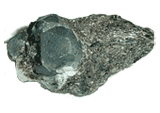 Natural Alexandrite Natural Alexandrite
Alexandrite was discovered in 1830 in the Ural mountains of Russia. Alexandrite is also found in Sri Lanka, Brazil, India, Tanzania, Zimbabwe, and most recently in Madagascar. The alexandrite variety of chrysoberyl is one of the rarest and most sought after of all gems.
Color: changing from green to red
Categories: semi-precious stone
Chemical Composition: BeAl2O4
Crystal Group: Orthorhombic
Refractive Index: 1.741 - 1.760
Hardness: 8.50
Density: 3.73
Occurrence: Tanzania, India, Russia, Madagascar, Sri Lanka, Zimbabwe, Zambia
| 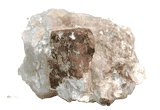 Natural Andalusite Natural Andalusite
Andalusite is popular as a collector stone but is seldom used in jewelry probably because of it's unavailability. With a hardness of 7 - 7.5 andalusite is tough enough to be used in jewelry. Andalusite, especially in the rough, can easily be confused with alexandrite because of similarities in color
Categories: semi-precious stone
Chemical Composition: Al2SiO5
Crystal Group: Orthorhombic
Refractive Index: 1.628 - 1.647
Hardness: 7 - 7.5
Density: 3.13 - 3.21
Occurrence: Brazil, Sri Lanka, Spain, East Africa, Burma, U.S.A.
| 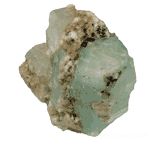 Natural Beryl Natural Beryl
Beryl is a semi-precious clear gemstone which usually comes in greens, yellows, and occasionally pinks, ands various shades thereof.
Color: Green, blue, pink, yellow, red
Categories: semi-precious stone
Chemical Composition: Be3Al2(SiO3)6
Crystal Group: Hexagonal
Refractive Index: 1.577(+-.016), 1.583 (+-.017)
Hardness: 7.5
Density: 2.67-2.745
Occurrence: Austria, Columbia, Brazil, Russia, East Africa, Australia, Madagascar, South Africa, Zimbabwe, India, Pakistan, Zambia, Nigeria, U.S.A., Afghanistan
| 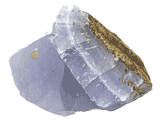 Natural Chalcedony Natural Chalcedony
Chalcedony is a catch all term that includes many well known varieties of cryptocrystalline quartz gemstones. They are found in all 50 States, in many colors and color combinations, and in sedimentary, igneous, and metamorphic rocks.
Color: grayish, purple, white, green, blue, lavender, yellow, brown
Categories: semi-precious stone
Chemical Composition: SiO2
Crystal Group: Hexagonal
Refractive Index: 1.530 - 1.539
Hardness: 6.5
Density: 2.57 ¨C 2.64
Occurrence: Brazil, U.S.A. Germany, India, Uruguay, Austarlia, Egypt, Italy, Scotland, South Africa, Namibia, Madagascar, Mexico, Tanzania, and many other localities throughout the world.
| 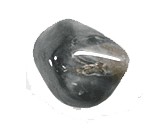 Natural Chrysoberyl Cats Eye Natural Chrysoberyl Cats Eye
Chrysoberyl cats eye is a very rare and expensive gemstone which is found in small quantities in Sri-Lanka and Brazil. The cats eye is present because the stone has chatoyancy in its make up and this effect cause the ¡®eye¡¯ which moves as the gem is gently turned .
Color: yellow, greenish yellow, yellowish green
Categories: semi-precious stone
Chemical Composition: BeAl2O4
Crystal Group: Orthorhombic
Refractive Index: 1.741 - 1.760
Hardness: 8.5
Density: 3.73
Occurrence: Ceylon, Tanzania, Russia, Madagascar, Brazil.
| 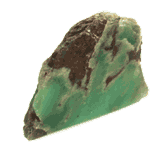 Natural Chrysoprase Natural Chrysoprase
Chrysoprase is a gemstone variety of chalcedony or cryptocrystalline quartz, colored by trace amounts of nickel.
Categories: semi-precious stone
Chemical Composition: SIO2
Crystal Group: Hexagonal
Refractive Index: 1.544 - 1.553
Hardness: 7
Density: 2.65 - 2.66
Occurrence: Australia, Tanzania
| 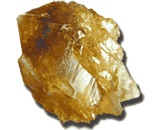 Natural Citrine Natural Citrine
Citrine is any quartz crystal or cluster that is yellow or orange in color. Although often cut as a gemstone, citrine is actually somewhat rare in nature.
Color: Yellow, orange
Categories: semi-precious stone
Chemical Composition: SiO2
Crystal Group: Trigonal
Refractive Index: 1.544-1.553
Hardness: 7
Occurrence: Brazil, Uruguay, Mexico, Russia, USA.
| 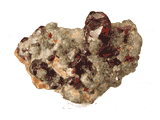 Natural Clinohumite Natural Clinohumite
Clinohumite is a rare mineral and an especially rare gemstone. It is a member of the humite group of minerals, which includes humite, clinohumite, chondrodite, and norbergite.Only two sources of gem-quality material are known: the Pamir Mountains of Tajikistan, and the Taymyr region of northern Siberia.
Color: Brown, yellow, white, orange, or reddish brown
Categories: semi-precious stone
Chemical Composition: Magnesium Silicate Fluoride OH
Crystal Group: Monoclinic
Refractive Index: 1.625 ¨C 1.668
Hardness: 6 - 6.5
Density: 3.17 - 3.35
Occurrence: Extremely rare - gem quality found only in the Pamir Mountains, Tadzhikistan. Other mineralogical occurrences include, Mt. Vesuvius, Italy; Pargas, Finland; Llanos de Juanar, Malaga, Spain; Tilly Foster Mine, New York; Fort Defiance, Apache County, Arizona; Crestmore Quarry, Riverside County and Lower Lake, Fresno County, California; Luna, New Mexico and Franklin, New Jersey, USA.
|
|
